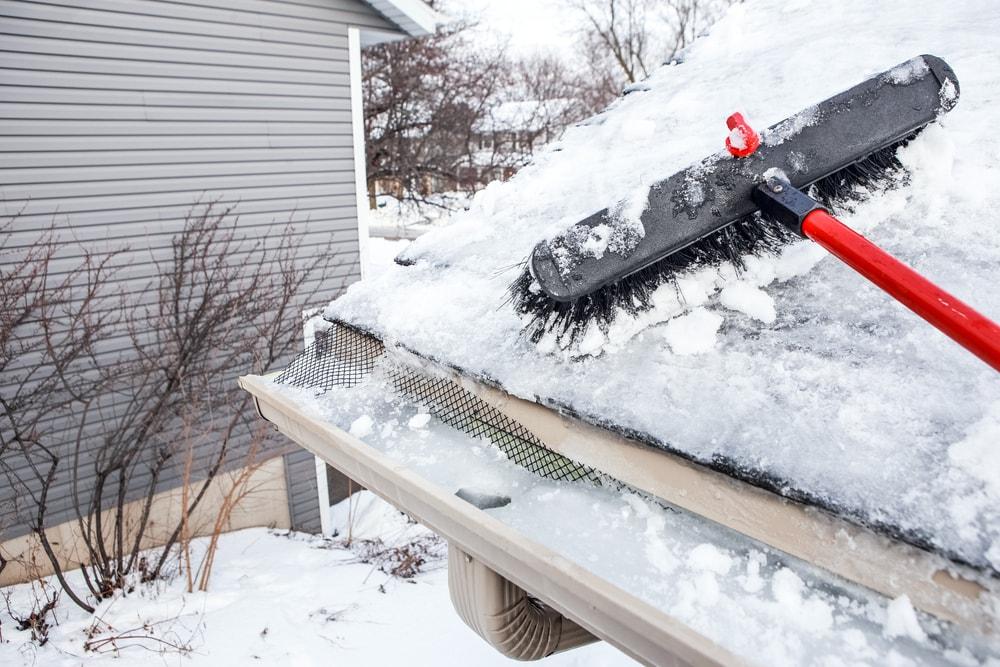
Ice dams are a headache for homeowners. They cause leaks, damage foundations, and make ice melt unevenly. The best way to get rid of ice dams is to understand how they occur and stop them from forming in the first place. And for that, we have gathered five tips for you to try and prevent ice dams:
- Install Roof And Soffit Vents
Consider installing roof and soffit vents on your home, which allow cold air to circulate freely. As a result, you can expect to see fewer ice dams on your roof.
Roof and soffit vents are also essential because they help prevent moisture from accumulating inside the walls of your house during the winter months.
Roof and soffit vents are sometimes referred to as ‘soffit vents’ or ‘roof vents.’ You can install them in areas such as overhangs, dormers, or other similar structures where there’s an opening in the eaves of a house extending beyond its foundation line. Its purpose is twofold; first, they trap warm air under the insulation panels inside attics. Secondly, they allow rainwater runoff through these same openings out into gutters below them instead of pooling around windowsills which would cause water damage within homes over time.
But if water is already pooling around your window sills and other areas, it would be best to call an ice dam removal professional to remove them.
- Find And Seal Air Leaks
Seal air leaks. Air leaks are one of the main causes of ice dams, so you must seal them up. Here’s how you can do so:
- Use weather stripping around windows and doors.
- Caulk gaps around windows, doors, and other openings in your house.
- If needed, use spray foam to fill larger gaps (this will make sure they’re sealed properly).
Check for holes around pipes or vents that lead into your attic—you may be able to fix them by adding a few clips or screws. If necessary, you can also use foam insulation (but make sure it doesn’t obstruct any ventilation).
Look for gaps where the ceiling meets walls; these might allow heat from inside your home to escape. To prevent this in the winter months, consider putting up wood planks between joists on either side of an opening. It can help reduce airflow between rooms while still allowing adequate ventilation throughout those areas during warmer seasons.
- Make Sure Your Attic Has Adequate Insulation
To ensure that your attic has adequate insulation, check for any gaps in the insulation with a thermal camera. Gaps are areas where heat may escape from or enter your home. If you find any under-insulated spaces, caulk them or replace the insulation with more efficient material.
Some other ways to reduce heat loss from your roof include:
- Insulating the attic floor with a thick layer of foam insulation.
- Caulking all gaps around wiring and plumbing pipes not to leak cold air into your home’s living space.
- Ensure that the attic access is sealed off properly (even if you don’t plan to use it).
- Address Uneven Heat Gain In Your Home.
The most important thing you can do to prevent ice dams is to address uneven heat gain in your home. What does this mean?
It means some areas of your home may be warmer than others and may not be insulated properly (or at all). The simplest way to understand this concept is by looking at the temperature difference between the rooms of your home. If there’s a significant difference, you run a higher risk of ice damming because more condensation and moisture may be on your roof.
Uneven heat gain can happen anywhere in your house—from under windows or poorly insulated attics and through the walls if they aren’t sealed or insulated properly. This situation creates an environment where warm air can escape into colder spaces like attics, crawlspaces, and basements, causing them to retain more moisture. So, when temperatures drop again during the winter months, snow melts faster than usual, leaving behind excess water on top surfaces, which freeze into icicles or ice dams. Hence, it’s crucial to address uneven heat gain in your home as soon as possible.
- Invest In A Snow Rake
The snow rake is one of the best tools for cleaning up after a snowstorm. A snow rake has a long handle, and it’s usually made out of metal. You can use them to pull the heavy layers of packed snow off your roof, so you don’t have to do it by hand.
There are many different types of snow rakes on the market today. Still, they all work in basically the same way. Some even come with wheels at their base so that you can move them around effortlessly. You just have to choose according to your needs.
The best thing about these tools is that they can also clear your driveway or sidewalk after a big storm. However, some safety tips should be followed when using these devices so that nothing goes wrong during use!
Conclusion
Dealing with ice dams is messy, time-consuming, and can be expensive. That’s why it’s best to take care of this problem before winter sets in.
The good news is that there are many simple ways to prevent ice dams from forming on your roof and causing damage to your home or business property. This article has given you some of the simplest yet essential things you need to take care of to avoid this phenomenon.





